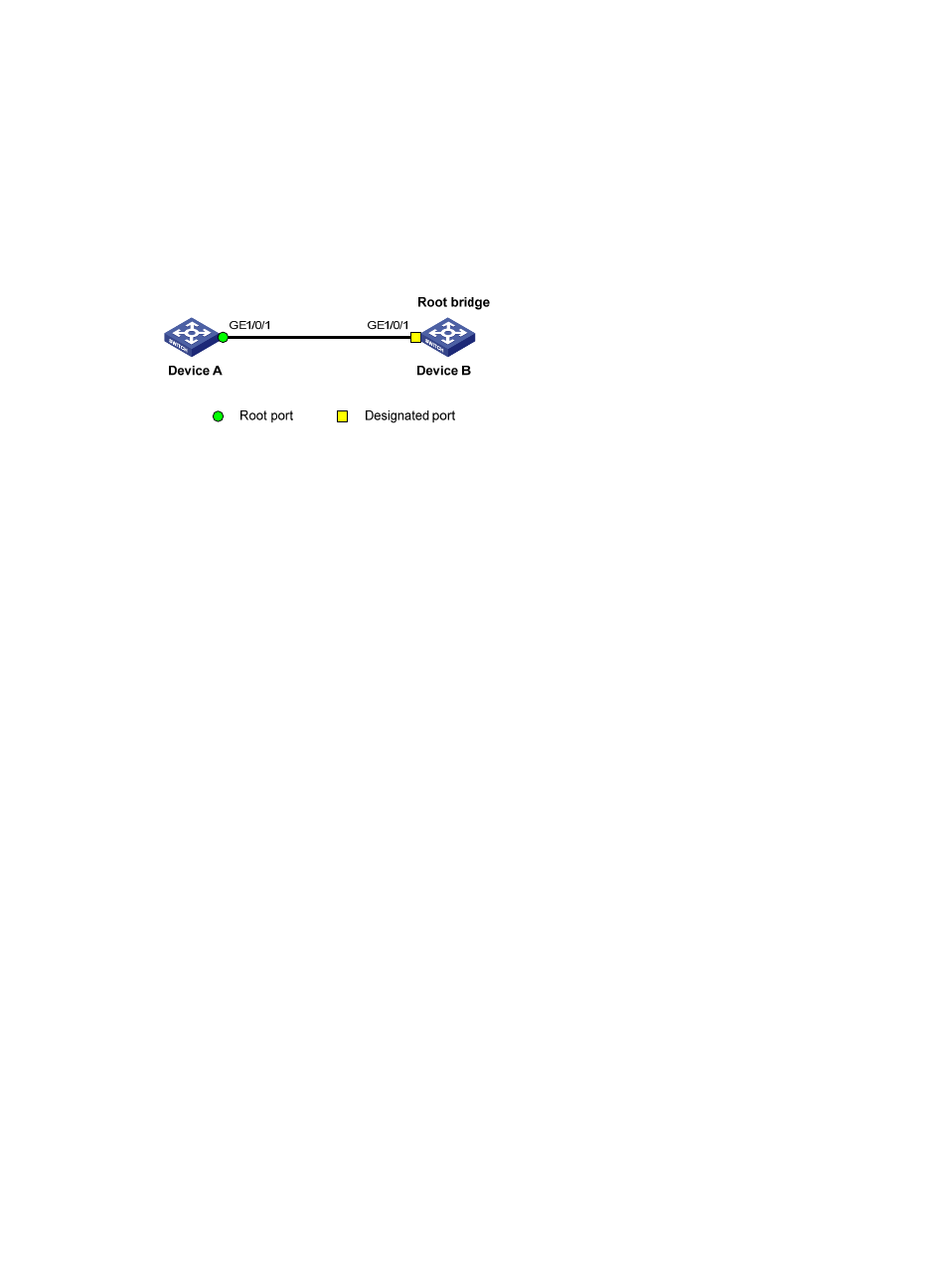Configuration example, Network requirements, Configuration procedure – H3C Technologies H3C WX5500E Series Access Controllers User Manual
Page 101: Configuring protection functions, Enabling bpdu guard

90
Configuration example
Network requirements
As shown in
, Device A connects to a third-party device that has a different spanning tree
implementation. Both devices are in the same region. The third-party device (Device B) is the regional
root bridge, and Device A is the downstream device.
Figure 23 Network diagram
Configuration procedure
# Enable no agreement check on GigabitEthernet 1/0/1 of Device A.
[DeviceA] interface gigabitethernet 1/0/1
[DeviceA-GigabitEthernet1/0/1] stp no-agreement-check
Configuring protection functions
A spanning tree device supports the following protection functions:
•
BPDU guard
•
Root guard
•
Loop guard
•
TC-BPDU guard
•
BPDU drop
Enabling BPDU guard
For access layer devices, access ports can directly connect to user terminals (such as PCs) or file servers.
Access ports are configured as edge ports to allow rapid transition. When these ports receive
configuration BPDUs, the system automatically sets the ports as non-edge ports and starts a new
spanning tree calculation process. This causes a change of network topology. Under normal conditions,
these ports should not receive configuration BPDUs. However, if someone forges configuration BPDUs
maliciously to attack the devices, the network will become unstable.
The spanning tree protocol provides the BPDU guard function to protect the system against such attacks.
With the BPDU guard function enabled on devices, when edge ports receive configuration BPDUs, the
system closes these ports and notifies the NMS that they have been closed by the spanning tree protocol.
The device will reactivate closed ports after the port status detection timer expires. For more information
about the port status detection timer, see Fundamentals Configuration Guide.
